Right before the 2016 Mongol Derby was about to begin, U.S. Air Force Captain and Iraq War veteran Tim Finley stood at the start line with 42 other competitors while Derby Chief Katy Willings gave a “Churchill-style speech,” wishing the riders Godspeed.
As Tim stood in the midst of a “wild writhing throng of ponies” with nervous riders, he realized something that would stay with him throughout his 600-mile ride. “It was kind of hazy and I looked out on the horizon and I realized that no one here had any idea what was on the other side of the horizon any more than I did. And there was no one more comfortable with not knowing what lay ahead,” he said, indicating that his service in the Air Force had prepared him for the unknown. “My ability to be comfortable in conditions where I was uncomfortable gave me an advantage … and as soon as that feeling hit—ice in my veins.”
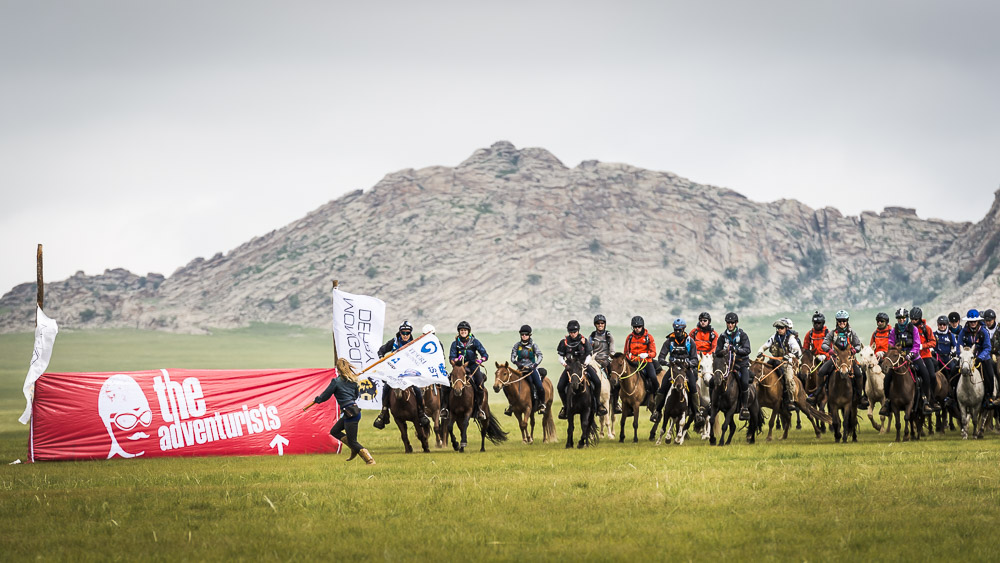
Tim affirms he never thought about quitting. Not when he was thrown the first day and cracked his pelvis, not when he was in the midst of “biblical” swarms of insects and not when he had a debilitating bout of dysentery. He believes his ability to smile, enjoy the experience and embrace being uncomfortable was what helped him get across the finish line—in 13 place nonetheless.
Tim also had other incentives to compete and complete the Derby: He was competing to face his own demons and to raise awareness for the 22 military veterans that commit suicide every day. He honored them by naming each horse he rode after a veteran that had taken his own life. After he completed a leg, he would write the name on his shirt, eventually carrying the 28 names across the finish line with him. “These are people who never had an example, never had a solution, never had a finish line to cross,” Tim said.
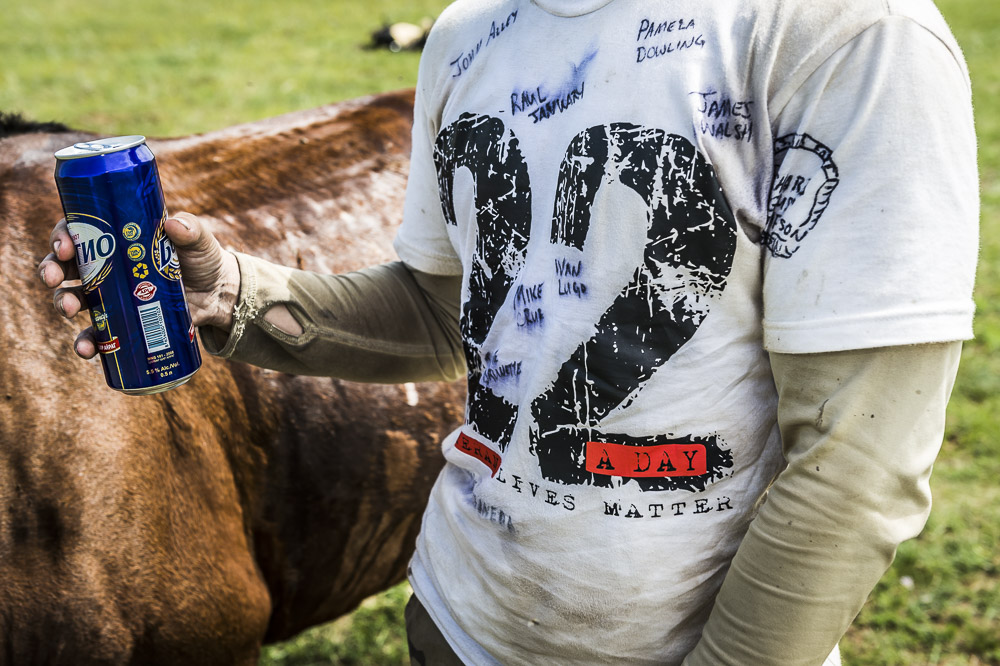
In preparation for my upcoming Mongol Derby adventure, I had the opportunity to ask him about his experience and for advice when he was spoke at the World Horse Expo in Harrisburg, Pennsylvania, in March.
Q: What was your riding experience before the Derby?
TF: When I applied, I had been riding only for a total of a year and a half. I had never done an endurance race longer than 30 miles. So this was way over my head.
I had been riding a 17-hand Thoroughbred who’s rambunctious and tough to control and he really was good training because I had to stay on my toes. But let’s face it, you can’t be a horseman in a year in a half. (Although Tim claims “you can’t be a horseman in a year in a half,” he was the veterinarian’s choice for good horsemanship for the 2016 Mongol Derby).
Q: What was your Derby preparation like?
TF: I was in really good physical condition when I showed up—I wasn’t worried about that. I was worried about horsemanship.
You bring four buckets with you to the Mongol Derby. Horsemanship, athleticism, grit and luck. Grit is a choice, you can choose how much you put in there. Luck—you have no idea what’s in that bucket. But horsemanship and athleticism are the things you can prepare for.
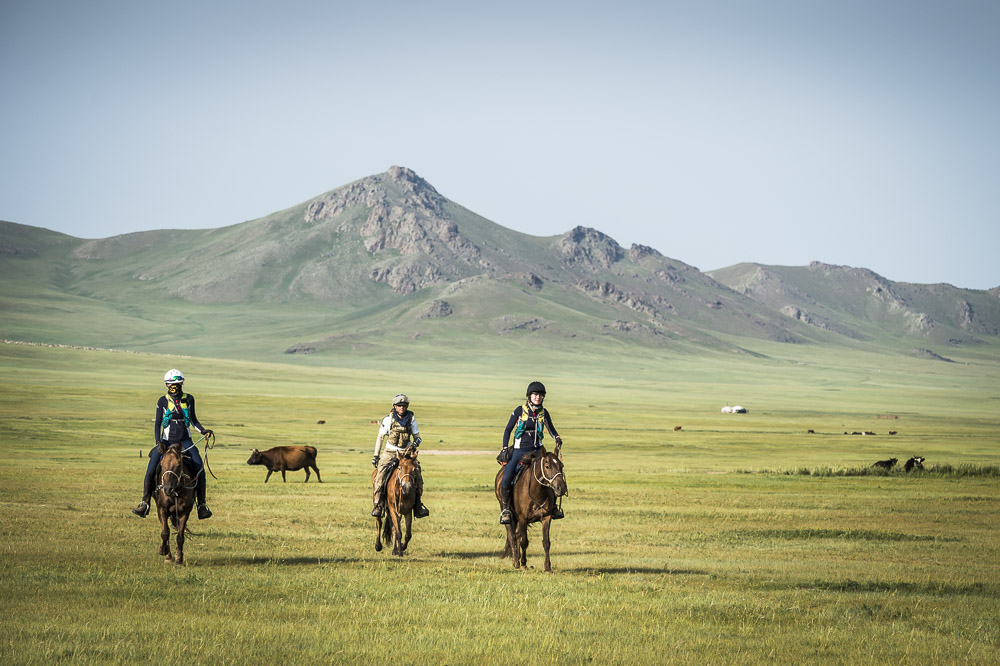
I knew I was going to be riding horses I didn’t know and I knew that was going to be the crux of my success.
To prepare, I did two 50-mile rides a month. I’d travel to different states and people would give me a horse and I’d just ride blindly, hop on a horse and go. And maybe the next day someone would have another horse and I’d ride that one. And then two weeks later I’d go to a different race in a different state and ride a couple a horses there.
Every horse in the race was different so the best thing you can do is to train on a lot of different horses. Not a single one of those horses thinks or operates like a western culture horse. If you use your feet, you’ll spook the horse. If you squeeze your legs, you’ll spook the horse. You have to completely change your language with the horse. Each horse is different.
I knew the more minds I could ride would prepare me the fastest.
As for athleticism, I’m a natural athlete so keeping my balance on the horse and staying in the saddle is something I’m good at naturally. Athleticism I had, grit I had.
Q: Do you have any tips for selecting horses at each checkpoint?
TF: Though all the horses eat the exact same as all the other horses, you’ll see plump, round ones and you’ll see ones who look emaciated. The plump ones are most likely lazy, and the thin ones are runners. So look for thin horses who are in good muscular shape—they should have good tone.
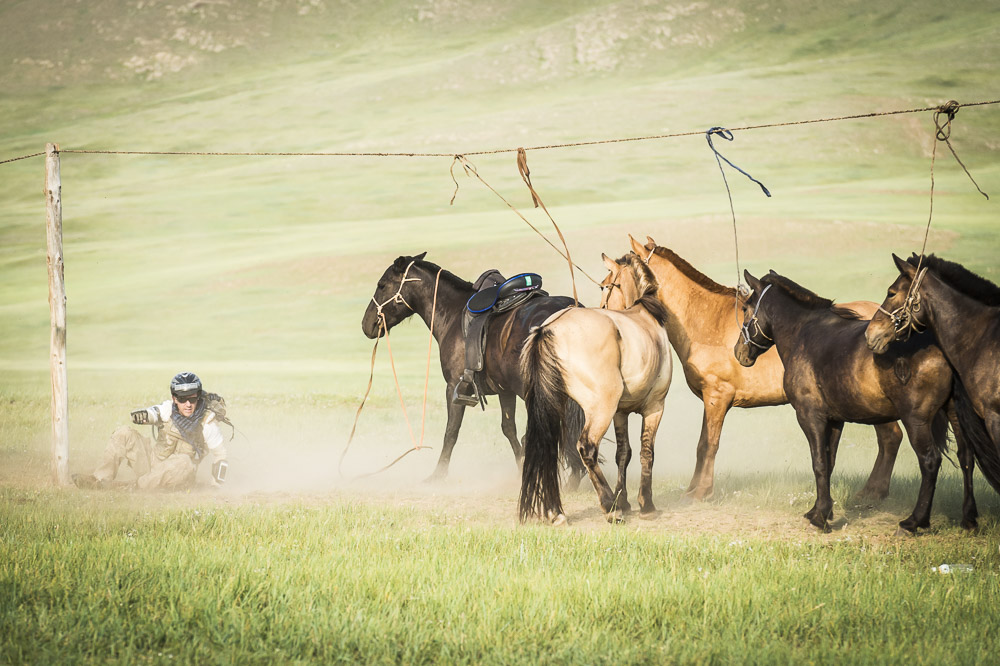
Another thing to look for are galls on the corners of the horses’ mouths. These are from their Mongolian riders pulling back on the reins, an indication a horse is a runner. And horses who are scarred up on the face are good picks because they’re competitive and they’ll run alone or bite to be in the front.
The horses are mostly geldings. Occasionally you’ll get a stallion. You can tell the sex of the horse by the way their hair is trimmed. All of the horses have a long forelock to keep the flies off and have long manes at the withers so you can get up on them bareback. But the geldings by in large have the rest of their manes buzzed and the stallions have their whole mane.
There are occasionally herders who really love the naadam sport [a traditional festival in Mongolia that includes horse racing] and they breed and train racehorses and will loan these horses for the race. The herders are all about presentation. If you present yourself as a fighter, puff up your chest in a warrior ethos kind of way and speak confidently they’ll cue in on that. Bribery also goes a long way. I used snus [snuff tobacco] because it comes in a cool little can that’s waterproof and durable.
Q: How hard was it to make the weight limit?
TF: The weight limit—don’t worry about it. Because if you’re approaching 11 pounds, you’re carrying more than you need. There’s a lot of things you don’t need. It all boils down to what you are comfortable with. And if you are comfortable being uncomfortable, it’s amazing what you don’t need.
Q: You had a different approach to how you carried your supplies and wore a vest instead of using saddle bags. Do you think that was the way to go?
TF: Wearing that kit is comfortable for me, it’s what I’m familiar with. And it made no sense to even have a saddle bag. It would have just been something else to bang around and worry about.
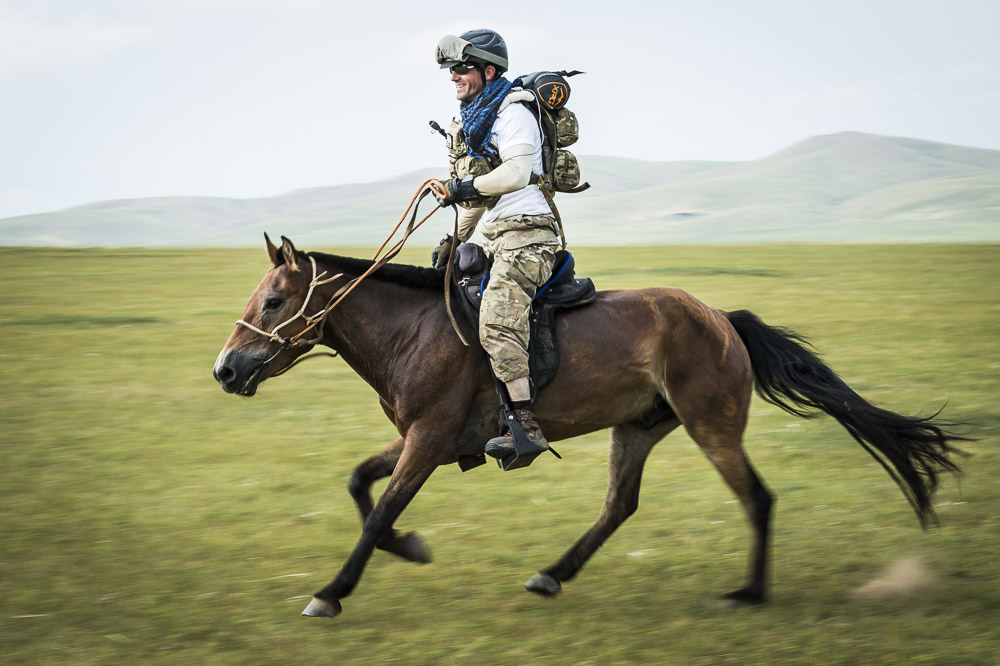
People were like, “Where’s your bed roll?” And I would say, “I’m just going to sleep on the ground. What’s the difference?” I crossed the finish line with my stuff and they saw that we as competitors really didn’t need all this. A few competitors since have asked to use my vest. It’s not cheap, but man it works.
Q: How hard was it to navigate?
TF: I just brought a little compass on my wrist. I dead reckoned almost the entire race. Dead reckoning is the process of calculating your current position by using a previously determined position and advancing that position based upon known or estimated speeds over time. I would turn my GPS on at night and go through all the next day’s legs and I would look at the magnetic bearing from each point on the GPS like river crossings, or mountain passes and I would look at that line between them, get the bearing, write it on a little notecard and I would plop it down in this little plastic window on my front pouch and I would just look down, get to that point, point in that direction until I got that magnetic bearing, look and pick out a landmark and then ride to that landmark.
The Mongol Derby doesn’t require navigation training per se, but just an understanding of how a compass works and it’s really as simple as pointing, saying OK that matches, finding a point and then riding to the point.
I realize a lot of people don’t know how to dead reckon and that’s kind of unnerving if you don’t know what you’re doing because you risk going off in the middle of nowhere.
Q: Did you camp by yourself between horse stations?
TF: The one time I did camp out with another rider, it was by chance. We stayed in this old log cabin and slept on logs that were off the ground. There also happened to be a corral next to it so I hobbled my horse and put him in the corral. Always try to camp at a ger with a herding family so that they can help you with your horse if you can, but don’t let them give you water.
Q: A lot of the riders have experienced illness. How did you fare?
TF: I was really sick with dysentery with just six legs left. I was barely coherent. I would ask for the fastest horse, though I was in no condition to ride him. I’d get off the horse and collapse to the ground. And I’d just lay there while the herders tacked up my next horse. I wouldn’t get water or food because there was no sense in it since it would just go through me. So I would get on the horse and while I was on the horse I was actually in more control. It was when I got off that my body shut down. I pushed through three legs and at the end of the day I crashed and was in and out of consciousness. I woke up the next morning and remember hearing people talking like I wasn’t going to finish … I heard the doctor say, “he looks bad.” I remember lugging my saddle out to the horse and hearing the doctor say, “Well I’ll be damned, there he goes.”
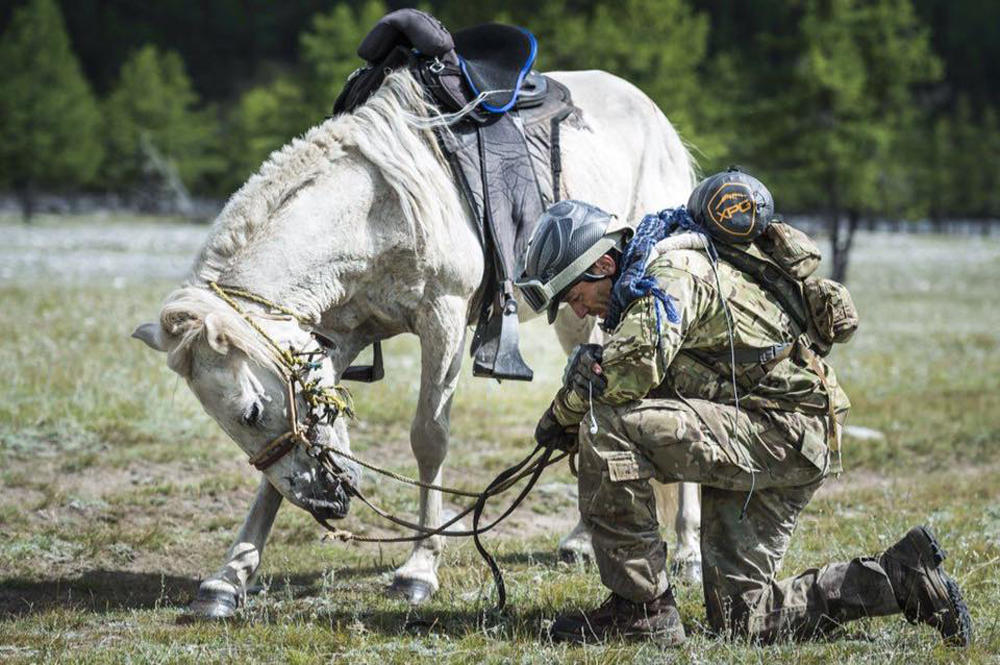
Q: What did your military buddies think about you competing in the race?
TF: Most of the guys I worked with [in the military] knew my backstory and that I going through a tough time when I got back from Iraq, so they were supportive. This group of guys is pretty rough around the edges. There were some jokes about riding ponies, but there was definitely a level of you could die doing this. So they said things like, “You’re crazy man. Good luck. Have fun.” I think the reason why I was doing it made it easier for them to understand.
If you ever get the opportunity to listen to Tim speak, do it. He’s an incredible person with a moving story to share. Watch for his upcoming book, To Live With Honor, a prequel to his Mongol Derby experience and visit his website to sign up for more details on the release.
Practical Horseman Associate Editor Jocelyn Pierce is competing in the Mongol Derby, a 600-mile expedition considered the longest and toughest horse race in the world, Aug. 8-27. Here’s how to follow the action, sponsored by Mane ‘n Tail and SmartPak:
• Visit Practical Horseman for daily race recaps and Jocelyn updates from 2017 Derby finisher Leslie Wylie
• Follow Jocelyn’s progress live via her GPS tracker, read official reports via the Derby website, and follow @mongolderbylive on Twitter
• Tune in for Derby Dot Watch Party podcasts presented by Horse Radio Network in partnership with Practical Horseman, broadcast live nightly at 8 p.m. EST











